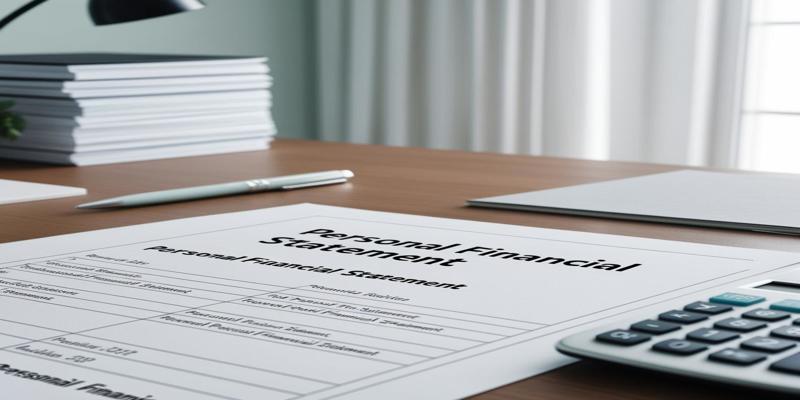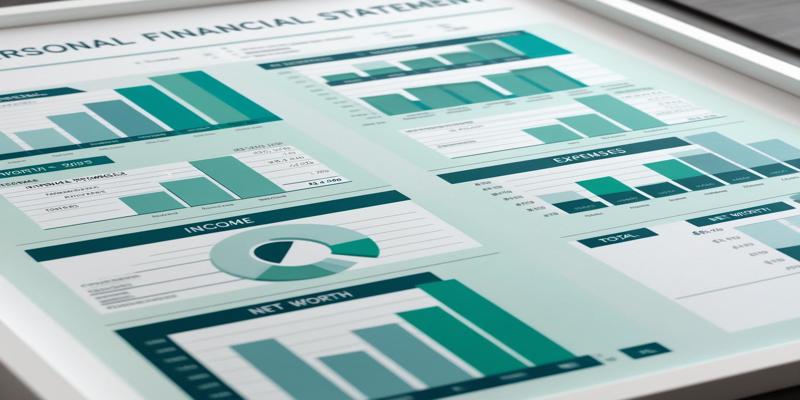Conducting a Personal Financial Review
Dec 06, 2024 By Verna Wesley
Are you on top of your money game? Knowing your financial statement can make a big difference between long-term success and economic security. A personal financial statement is a broad snapshot of assets, liabilities, and net worth that offers thorough insights into one's economic situation.
Understanding Your Financial Statement

A personal financial statement is a useful way to start analyzing your financial situation. This report provides a general overview of your current financial situation and will allow you to make realistic decisions about the future.
Components of a Personal Financial Statement
Your financial statement usually consists of two parts: assets and liabilities. Assets are what you possess and to which some monetary value is attached: cash, investments, real estate, and personal property. On the other hand, liabilities are debts owed, such as mortgages, car loans, credit card debt, and all forms of loans.
Calculating Your Net Worth
Subtract your total liabilities from your total assets to get your net worth. This number represents an important benchmark of your overall financial well-being. A positive net worth indicates you have more assets than liabilities. A negative net worth means that your debts outweigh your assets.
Analyzing Your Financial Statement
By reviewing your financial statement periodically, you can do the following:
- Track your progress toward your financial goals
- Identify areas where you can cut spending or save more
- Make intelligent decisions about big purchases or investments
- Be prepared when you apply for loans or go to see a financial planner
Critical Components of a Personal Financial Statement
A personal financial statement is a basic document used to determine one's current financial situation. It consists of a few key components that provide an overall picture of one's financial situation.
Assets
Your assets are things you own and have some monetary value. This would include:
- Cash and bank accounts
- Investments (stocks, bonds, mutual funds)
- Real estate properties
- Vehicles
- Personal property (jewelry, art, collectibles)
In listing your assets, be thorough, as they are the base of your financial net worth.
Liabilities
The liabilities are your financial obligations or debts that you owe to others. The most common liabilities are as follows:
- Mortgage loans
- Credit card balances
- Student loans
- Car loans
- Personal loans
Recording all outstanding debts is necessary to calculate the total financial obligations correctly.
Income and Expenses
Although only sometimes included in an introductory personal financial statement, tracking income and expenses provides excellent insight into your cash flow. The information helps you understand where to cut spending or increase savings to enhance your financial position.
How to Read and Analyze Your Financial Statement

Understanding Key Components
Your financial statement has two major parts: the balance sheet and the income statement. The balance sheet is a snapshot of what you have going into your net worth at any given time. The income statement is a report on your inflows and outflows over some time, typically measured monthly or annually.
Assessing Your Financial Health
First, calculate an approximation of net worth, the residual value derived by subtracting total liabilities from total assets. If it's positive and going up, that generally means good financial health. Then, consider your debt-to-asset ratio by dividing total liabilities by total assets. The lower the ratio, the sounder your financial position.
Identifying Areas for Improvement
Analyze your income statement to get an idea of the direction of the flow of money. From this, identify opportunities for expense reduction or increasing income. Check your savings rateideally, it should be 0% of your income.
Using Ratios for Deeper Insights
Compute key financial ratios, including the liquidity ratio, defined by the relationship between current assets and liabilities, and the savings ratio, defined by the relationship between savings and income. The former conveys considerable information regarding your immediate or short-run financial stability, while the latter provides insight into your long-term wealth accumulation potential. Plot your ratios against recommended benchmarks or personal goals and objectives to understand where you stand.
Using Financial Ratios to Assess Your Financial Health
Financial ratios are powerful diagnostic tools for economic health. Analyzing the key metrics will give you better insight into your financial positioning and make more prudent decisions about your money.
Liquidity Ratios
One essential set includes liquidity ratios, which indicate how effectively one can fulfill short-term monetary needs. The present ratio, for example, indicates the organization's current assets relative to its current liabilities. A proportion above 1.0 indicates that the firm can meet its short-term debts, while a higher proportion indicates a better financial state.
Debt Ratios
Debt ratios allow you to measure the extent of your indebtedness. The debt-to-equity ratio relates your total amount of debt to your net worth. The lower the ratio, the less reliant you are on debt financing. Another important ratio is the debt-to-income ratio, which will be very important if you're looking at applying for loans or mortgages.
Savings Ratios
Your savings rate is a good indicator of overall long-term health. The ratio is calculated numerically as savings divided by income- the proportion of your income that you set aside. As a rule of thumb, financial advisors often suggest saving at least 20% of revenue, although the "right" rate may be more or less depending on what you are trying to do and where you are in life.
Improving Your Financial Position Based on Your Financial Statement
Identifying Areas for Improvement
Now that you have prepared your financial statement, it's time to put that information to work. First, look closely at your assets and liabilities to consider what changes you could make that would put you in a stronger financial position. Consider ways you could increase your assets or decrease your liabilities.
Setting Realistic Financial Goals
Turn your financial statement into a launching pad for achievable goals, such as reducing high-interest debt, improving your savings rate, or increasing investment contributions. Keep in mind that these should be specific, measurable, and time-bound. Small and sustained changes often add to significant long-term improvements in financial health.
Conclusion
By developing your personal financial statement, you have taken a major step toward maintaining financial health and stability. Regular updates of your assets, liabilities, and net worth enable you to make healthy decisions about your financial future.








